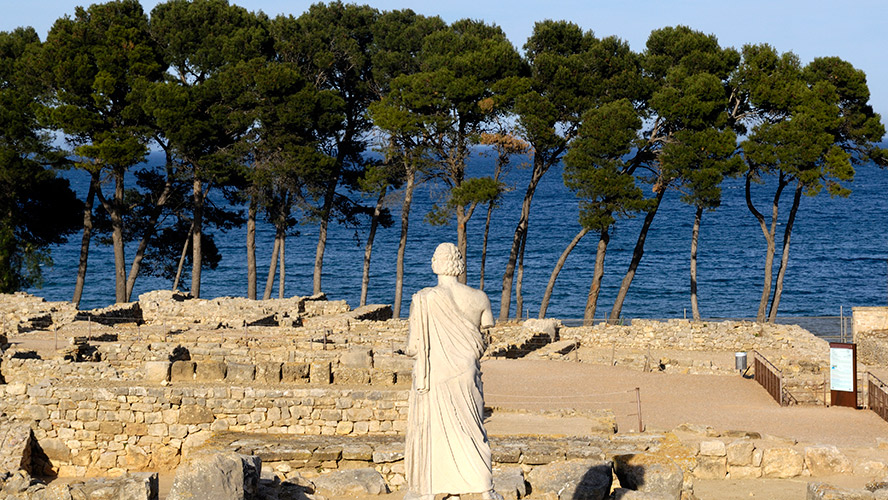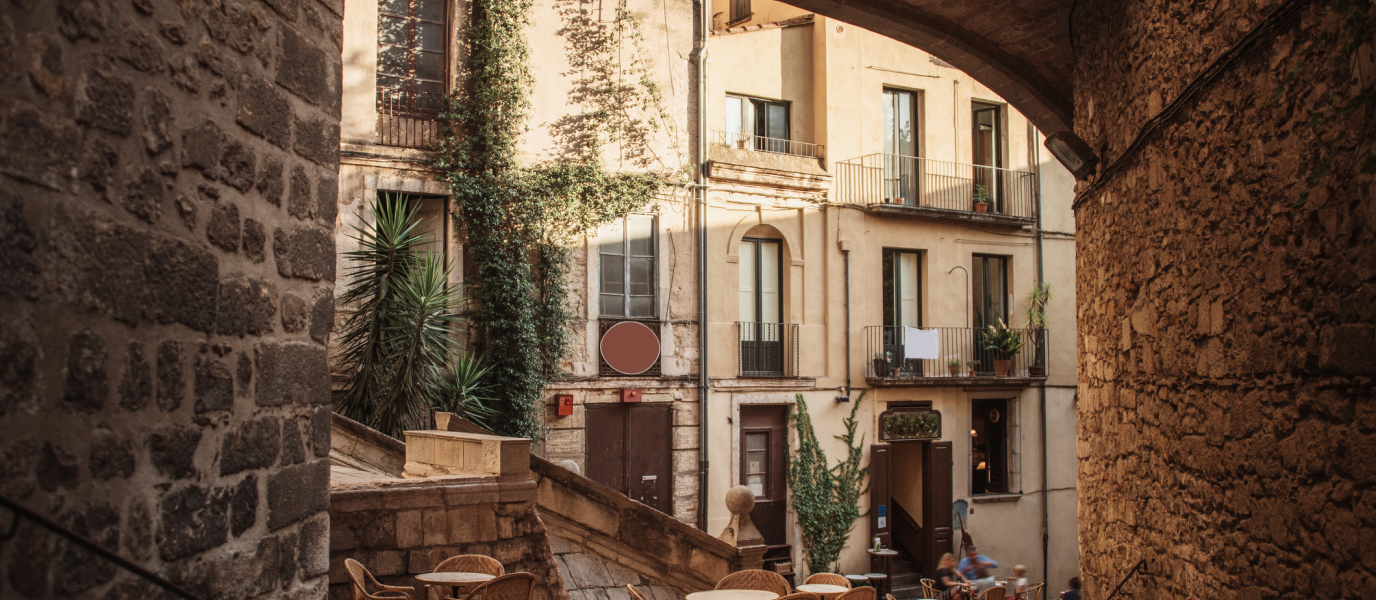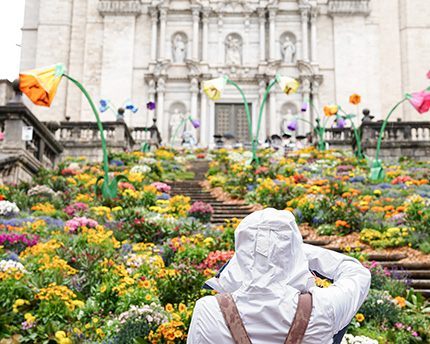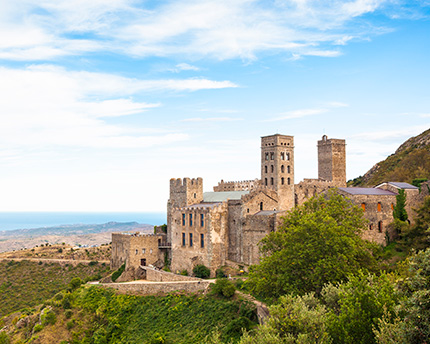The ruins of Empúries date from around the 6th century BC and are unusual because they were first inhabited by the Greeks and then later the Romans. The site is a highly recommended destination for archaeology fans and general visitors alike because the location is utterly charming – everyone who comes here is intrigued by its strategic importance and beauty.
Set in the Gulf of Roses, the excavated ruins of Empúries are exactly 2 km from L’Escala and just over 500 m from Sant Martí d’ Empúries, so it’s easy to get to them from either of these seaside towns.
Entrance to the site includes a visit to the museum where you can admire a selection of archaeological treasures that have been unearthed here since digging began in 1908.
History of the ruins of Empúries
The name Empúries comes from the Greek word “Emporion”, meaning market or trading hub. And the name makes sense because the city was built on the former delta of the Fluviá River, a crossroads between various trade routes with a natural port that could shelter ships. The first Greek settlement at Sant Martí d’Empúries dates from the 6th century BC, 575 BC to be precise, but a century later its founders, traders from Turkey, moved Emporion to the current location of the ruins and turned it into one of the most important ports in the Mediterranean.
During the Second Punic War (at the beginning of the 3rd century BC), Emporion became part of the Roman Empire and changed its name to Emporiae, marking the start of the Romanisation of the Iberian Peninsula. It was much loved by Julius Caesar, who built a huge neighbourhood behind the old Greek city in the 1st century BC to be used by veterans from his war campaigns, with an amphitheatre, gymnasium, shops and taverns around the forum.
The importance of Empúries declined in the 3rd century AD due to the growing power of Gerunda (Girona), Barcino (Barcelona) and Tarraco (Tarragona), and it was finally abandoned. In the 17th century, the people of L’Escala began to appropriate the Greek and Roman stone of Emporion/Emporiae for building work, until archaeological excavation of Empúries began in 1908. Only 25% of the surface of the ruins has been uncovered to date.
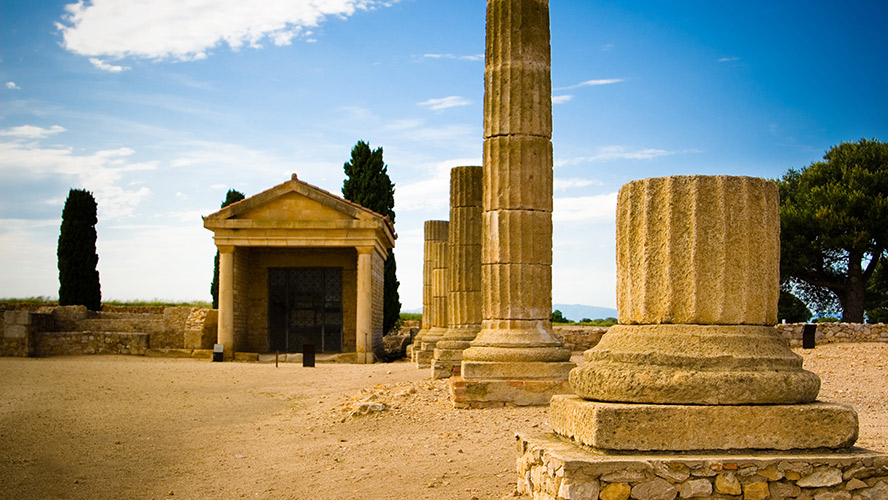
Architecture and monuments
When you visit the Greco-Roman site of the ruins of Empúries, it’s fascinating to think that you’re walking on land with thousands of years of history. As an example, 150 different types of mosaics made using various techniques can be found here, if you include those by both the Greeks and Romans. There are also several temples, such as the temples of Serapis and Asclepius – the latter was dedicated to the god of medicine and contains a copy of a statue of the god himself (the original is in the museum.) The temple has incredible views over the complex with the Greek city and sea in the background.
The Forum and Greek City
Your visit starts with the Greek City, the “New City” of Emporion. Here you’ll see remains of the wall, the agora, the market and other public buildings such as the salting factory where fish was preserved. You can also visit a private home with a large mosaic that decorated the banqueting hall.
The Roman Amphitheatre
The Roman city has a spectacular amphitheatre that could once hold 3,300 spectators. You can also see the reconstructed ambulacrum, the portico that surrounded the forum; the Cardo Maximus, the public baths and the wall, plus fabulous mosaics that decorate the floors of private homes.
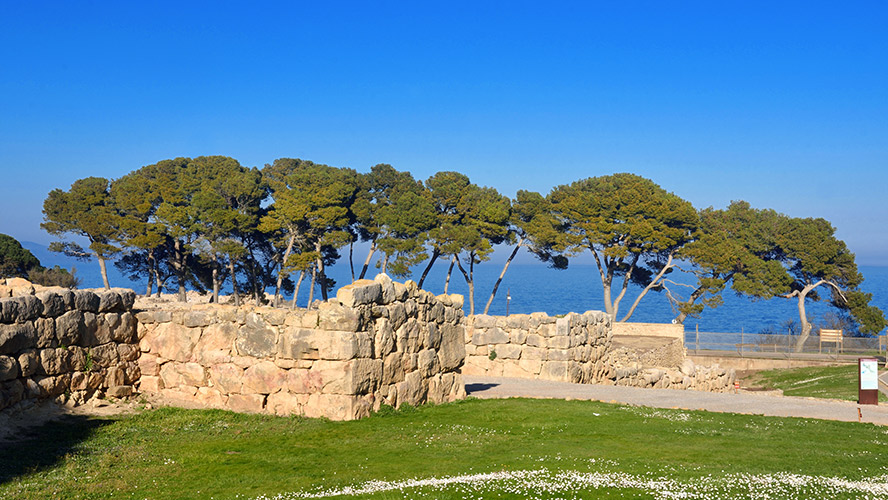
Museum of the ruins of Empúries
This small museum is between the Greek and Roman cities and displays a collection of items unearthed during the excavation of both sites and the surrounding area. You’ll see everything from children’s toys – it’s worth pausing to admire an articulated doll – to sculptures, jewels and various everyday objects.
The museum is set out in chronological order so you first see items from the site’s original inhabitants from the Bronze and Iron Ages, then the Greeks and later objects from the Roman ruins of Empúries, ending with the Later Roman Empire. The museum also puts on interesting temporary exhibitions.
The most important space is the Asclepius Room where the original marble statue of Asclepius is on display. Discovered in several fragments in 1909, the statue stands 2.2 m high and weighs around 900 kg. It was exhibited in the Archaeology Museum of Catalonia until 2008.
Recommendations for your visit
A standard ticket for the ruins of Empúries costs €7 but discounts are available for pensioners, large families, students, etc. The unemployed can enter for free. Entry is also free on the first Sunday of every month from September to June. The ticket price includes a visit to the archaeological site, the museum and an audio guide. Please note that there is no car park at the site so you should leave your car nearby or in L’Escala and then walk.
Both the ruins and the museum are open all year round from 10 a.m. to 8 p.m. in high season and from 10 a.m. to 5 p.m. in low season. Entry to the site closes an hour before closing time.
If you’d like to see what a Roman house in Emporiae might have been like, you can book a 3D tour of the Roman House of the Mosaics for €1.50. The building covers 1,000 m2 and has 45 rooms, and was expanded with the construction of the cryptoporticus. You can explore the atrium (central room), cubicula (private rooms), triclinium (dining room), tablinum (office) and peristyle with its viridarium, a large garden inspired by Pompeii.
A visit to the site takes approximately 90 minutes and it’s best to avoid visiting in the middle of the day during the summer months because there is very little shade.
Pets are permitted to enter the ruins of Empúries but they must be kept on a lead at all times.
